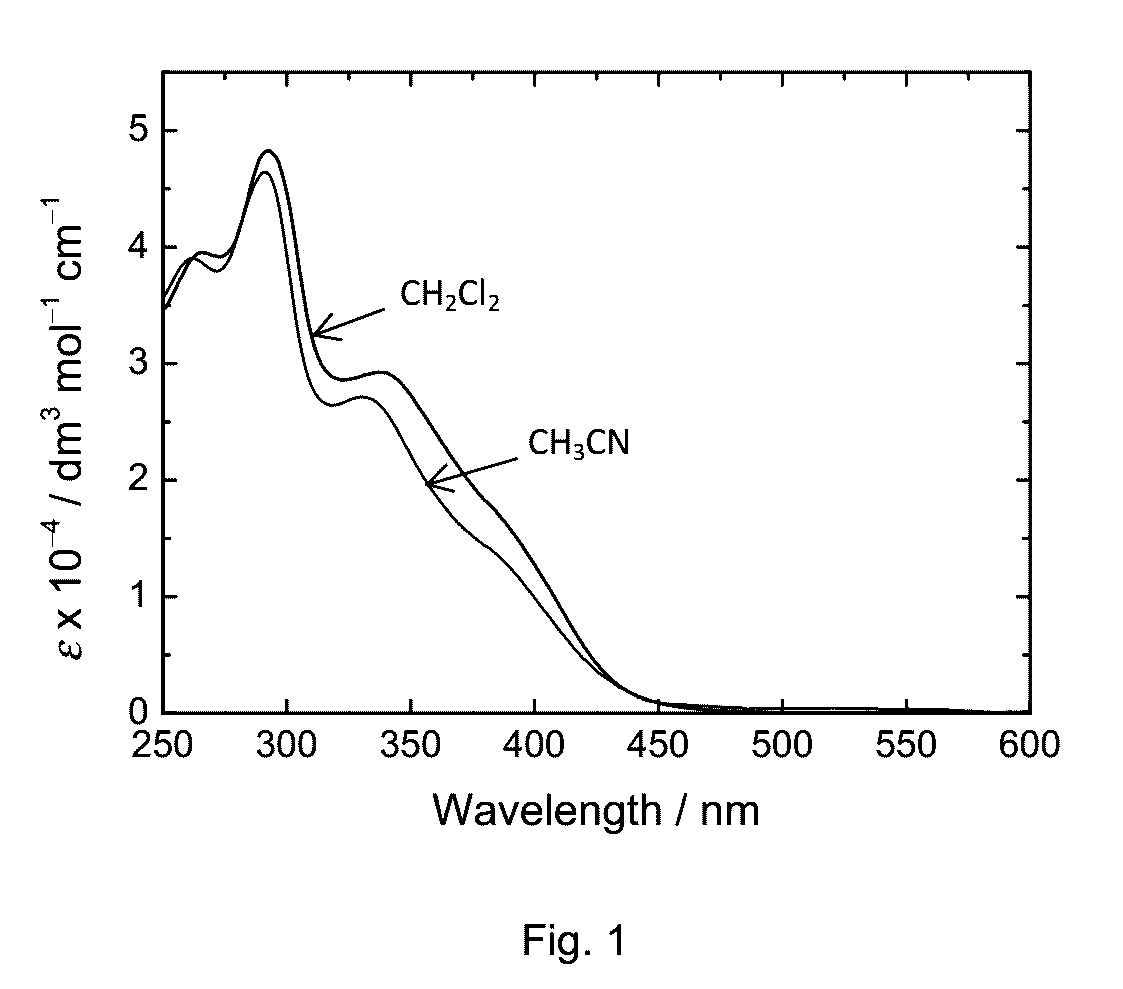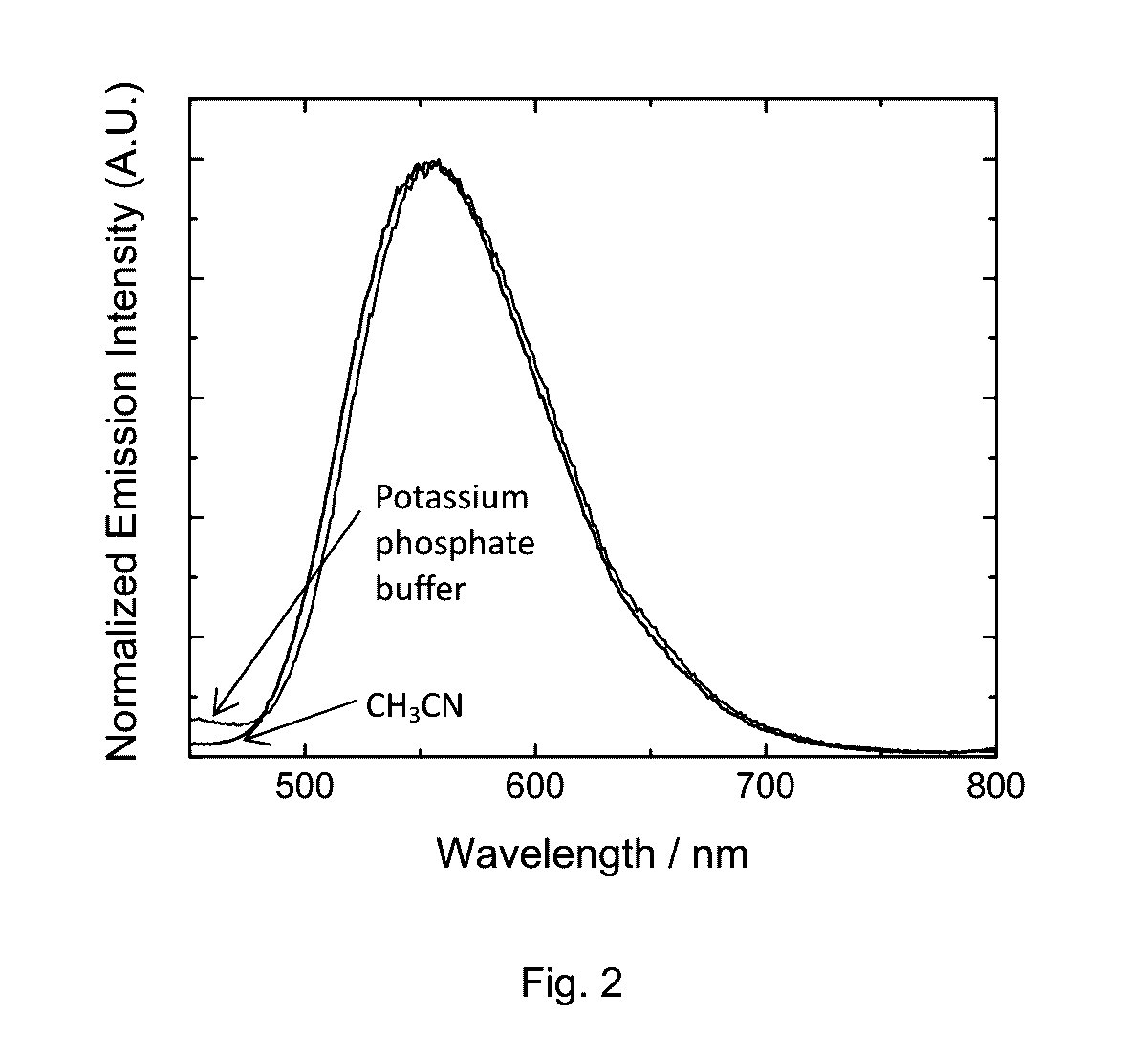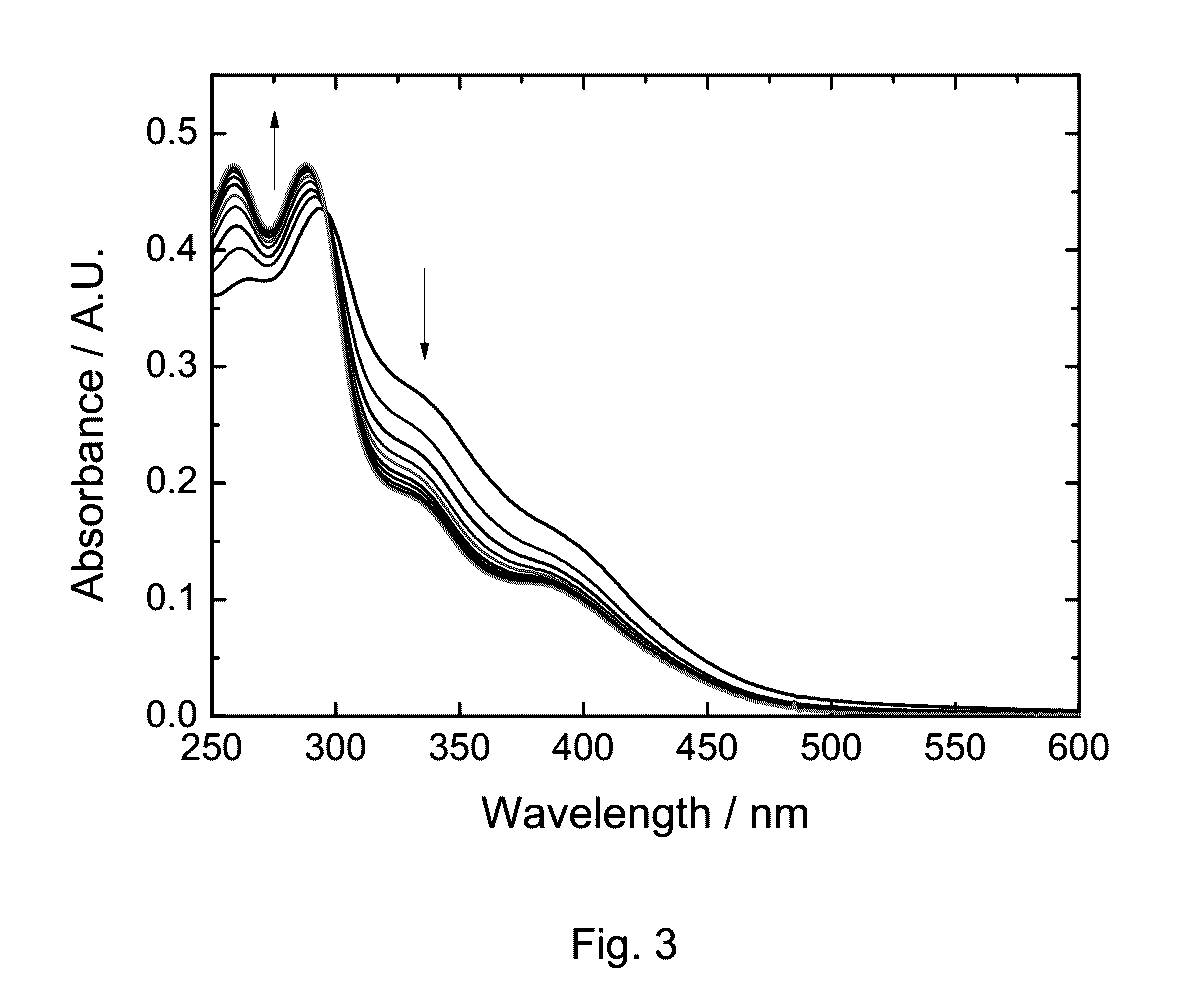Phosphorescent transition metal complex, its preparation and use
a transition metal complex and phosphorescence technology, applied in the field of phosphorescent transition metal complexes, can solve the problems of difficult to determine which part of the cell/organism has gained an increase in h/sub>2/sub>o/sub>level, limited use of phosphorescence markers, etc., to facilitate real-time monitoring, facilitate intense and long-lived phosphorescence, and exceptional cellular localization properties
- Summary
- Abstract
- Description
- Claims
- Application Information
AI Technical Summary
Benefits of technology
Problems solved by technology
Method used
Image
Examples
example 1
Preparation of the metal complex of Formula (IV)
[0087]The metal complex of Formula (IV) was prepared by reacting a precursor complex of Formula (VI) with a compound of Formula (VII) in THF as reaction solvent as further described below.
[0088]The compound of Formula (VII) was prepared as further described below. The compound of Formula (VI) was prepared as described by Lo and Hui (Lo, K. K. W. and Hui, W. K. Inorg. Chem., 2005, 44:1992-2002).
example 1a
Preparation of the compound of Formula (VII)
[0089]The compound of Formula (VII) was prepared. Firstly, 2-nitro-4-trimethylsilylethynylaniline of Formula (VIII) was prepared from 4-bromo-2-nitroaniline and ethynyltrimethylsilane. In a further reaction step, 4-ethynyl-2-nitroaniline (Formula (IX)) was prepared from 2-nitro-4-trimethylsilylethynylaniline. In a further step, 3-((4-amino-3-nitrophenyl)ethynyl)pyridine (Formula (X)) was prepared from 4-ethynyl-2-nitroaniline and in another reaction step, the compound of Formula (VII) was prepared from 3-((4-amino-3-nitrophenyl)ethynyl)pyridine.
a) Preparation of 2-nitro-4-trimethylsilylethynylaniline
[0090]A mixture of 4-bromo-2-nitroaniline (500.0 mg, 2.31 mmol), ethynyltrimethylsilane (359.0 μL, 2.55 mmol), bis(triphenylphosphine)palladium(II) dichloride (81.3 mg, 0.12 mmol), and copper(I) iodide (44.0 mg, 0.23 mmol) in triethylamine (15 mL) was refluxed under an inert atmosphere of nitrogen for 24 h. Water (10 mL) was added to quench the...
example 1b
Preparation of the compound of Formula (IV)
[0094]A mixture of the precursor metal complex of Formula (VI), i.e. of [Re(Ph2-phen)(CO)3(CH3CN)](CF3SO3) (163 mg, 0.21 mmol) and compound of Formula (VII), i.e. 1-(4-amino-3-nitrophenyl)-2-(3-pyridyl)ethane-1,2-dione (55.8 mg, 0.21 mmol), in THF (30 mL) was refluxed under an inert atmosphere of nitrogen for 12 h. The solvent was removed under vacuum. The residue was purified by column chromatography on silica gel, and the desired product was eluted with CH2Cl2 / CH3OH (20:1, v / v) as the eluent. Recrystallization of the product from CH2Cl2 / diethyl ether afforded metal complex of Formula (IV) as pale yellow crystals. Yield: 150 mg (71%); 1H NMR (300 MHz, DMSO-d6, 298 K, TMS): δ 9.74 (d, 2H, J=5.4 Hz; H2 and H9 of Ph2-phen), 9.08 (d, 1H, J=4.8 Hz; H2 of pyridine), 8.53 (d, 1H, J=2.1 Hz; H6 of pyridine), 8.43-8.40 (m, 1H; H4 of pyridine), 8.35 (br, 1H; NH), 8.30 (s, 1H; H2 of phenyl ring), 8.19-8.15 (m, 4H; H3, H5, H6 and H8 of Ph2-phen), 7.76 ...
PUM
| Property | Measurement | Unit |
|---|---|---|
| temperature | aaaaa | aaaaa |
| temperature | aaaaa | aaaaa |
| v/v | aaaaa | aaaaa |
Abstract
Description
Claims
Application Information
 Login to View More
Login to View More - R&D
- Intellectual Property
- Life Sciences
- Materials
- Tech Scout
- Unparalleled Data Quality
- Higher Quality Content
- 60% Fewer Hallucinations
Browse by: Latest US Patents, China's latest patents, Technical Efficacy Thesaurus, Application Domain, Technology Topic, Popular Technical Reports.
© 2025 PatSnap. All rights reserved.Legal|Privacy policy|Modern Slavery Act Transparency Statement|Sitemap|About US| Contact US: help@patsnap.com



